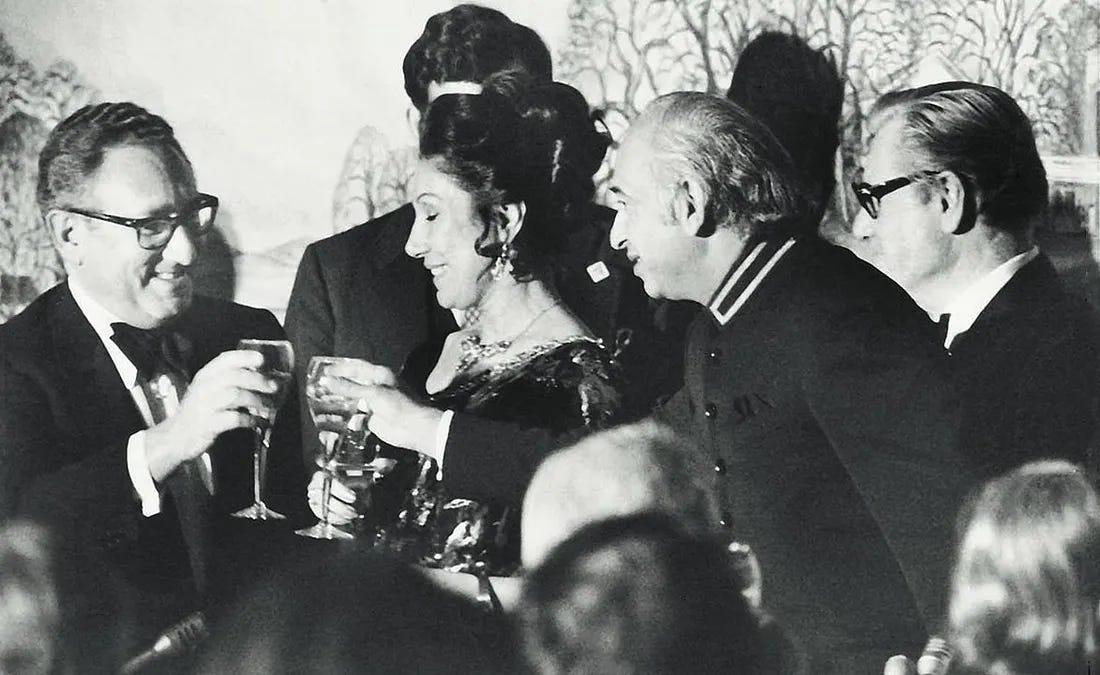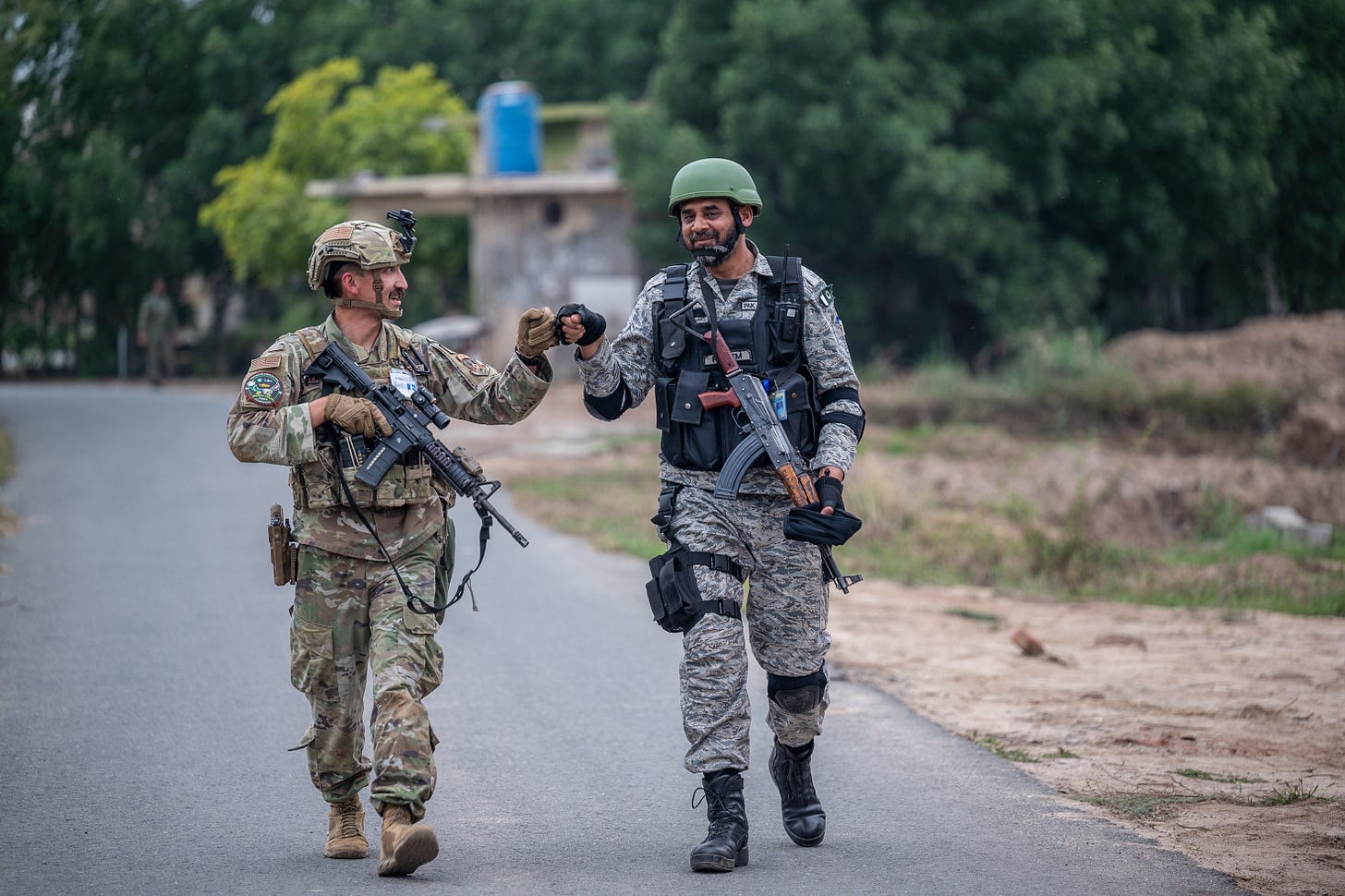Of Scotch and Strategy: The Western Face of Pakistan’s Military
This Paigham offers an inside look at the Pakistan military’s Westernized self-image, even as its geopolitical calculations evolve.
Sparing my readers from any more overuse of "Allah, Army, and America" in describing Pakistan’s power politics, I’m coining a new triad for this Paigham: Guns, Golf, and Generals.
Westernization of Pakistan Military
This fresh alliteration, beyond its literary flair, is meant to offer a peek into the Pakistan military's entanglement with the Western elite identity – ones that extend well beyond defense strategies. The free flow of whiskey behind cantonment walls, immaculate uniforms, Oxbridge accents, and manicured golf courses - remnants of the colonial legacy - quickly became institutionalized symbols of the elite military identity.
But don’t just take my word for it. Mani Shankar Aiyar, who served as India’s first Consul-General in Karachi from 1978-1982, once remarked in an interview that ‘any service officer with a weak liver wouldn’t survive in Pakistan.’ Or more poetically, as he put it: “Every evening had to be lubricated with the waters of Scotland.” A document also noted that former Pakistan Army General Musharraf, 'even before this newspaper report was known to like a quiet drink.' This irony exists alongside a national ban on liquor consumption for Muslims in Pakistan.

This cultural privilege further extends to the army’s vast network of golf courses, reportedly around 200, each spanning nearly 1,900 acres. Ostensibly recreational, these exclusive grounds, reserved for senior officials, serve as cultural signifiers, reinforcing status and insulation from the country’s deepening economic strain.
Exposure and training in Western institutions like the Royal Military Academy Sandhurst in the UK, Fort Leavenworth, and the National Defense University in the US have deeply informed the Pakistan military’s strategic thinking and organizational culture - traces of which still linger in their diction and desire. The early years of the Pakistani military, marked by significant Western support from 1954 to 1965, further entrenched this orientation. During the Cold War, Pakistan also became a key ally of the US by joining Western-led alliances such as the Southeast Asia Treaty Organization (SEATO) and CENTO or the Baghdad Pact. This association was revived and intensified during the US-led War on Terror in the Af-Pak region, when NATO coalition forces relied heavily on Pakistan as a strategic ally, primarily due to its geographic location. Between 2001 and 2011, substantial Western funding, military cooperation, and joint training exercises further embedded Western security frameworks into Pakistan’s defense institutions.
The Punjabi-dominated military’s fixation with the West, especially among the families of senior officials, reveals a striking contrast to its foreign policy rhetoric. The generational export of military elites’ children to Ivy League and other Western campuses, across the US, UK, and Australia, further reinforces the institution’s self-image through a Western lens. This aspiration for Western soft power, linguistic fluency, wealth, and liberal credentials sits comfortably alongside Pakistan’s strategic alignment with China. While Beijing and Islamabad describe their relationship as “all-weather friends” and “iron brothers,” the ties appear to be driven essentially by shared strategic interests rather than by ideological or cultural affinity.
In cultural contrast, while the Indian Army was structurally modeled on British lines in the post-independence era, it was later shaped by Soviet doctrines, training programs, and equipment during the Cold War.
Image Courtesy: Master Sgt. Christopher Parr (public domain)
Milbus and the Class Identity of Military
The Pakistani military’s admiration for the West also shapes how it accumulates and exercises power within the country. Scholar Ayesha Siddiqa’s concept of Milbus, (military business), studies the army’s deep reach into Pakistan’s economy through banks, housing societies, private education institutions, and transport networks. These financial ventures, besides profit-seeking, are means to build and sustain a distinct class identity.
The military’s involvement in educational policy, narrative-building, and alleged media control enables it to curate a Westernized elite identity alongside hyper-nationalist sentiment. This reflects its ability to maintain seemingly contradictory self-images without internal conflict - one intended for international audiences, and the other tailored to sustain domestic legitimacy among Islamist, anti-West factions. This duality has long permitted the military to consolidate elite control by appealing to the West for security assistance, while simultaneously mobilizing mass sentiment through populist religious and strategic narratives.
The Balancing Act
The current Chief of Army Staff, General Asim Munir, known for his strong Islamic inclinations, is a Hafiz-e-Quran - a title given to someone who has memorized the Quran. He has also been an outspoken critic of Western cultural influence on Pakistani society. Unlike many of his predecessors, Munir has not received training in Western military institutions. While this may temporarily temper the ‘Westernization’ associated with Pakistan’s military top brass, it is unlikely to fully sever the institution’s structural reliance on the US.
Munir’s approach may shape the rhetoric of Pakistan’s foreign policy, and although the US may no longer be the benefactor it once was, the strategic utility of Western alignment, particularly in terms of military aid and diplomatic capital, will likely ensure continued engagement. Even as geopolitical considerations keep Pakistan close to China, the legacy of Western influence will continue to shape its foreign policy imagination.
Recommended Reading
For more insights into Pakistan's military, its elite identity, and strategic alignments -
Inside Pakistan’s Military Inc. by Ayesha Siddiqa
Military, Inc. and the Western Gaze: A Postcolonial Reading by Shuja Nawaz
Pakistan: Between Mosque and Military by Husain Haqqani
Indian Intelligence Official Anand Arni on Pakistan’s New Army Chief Gen Asim Munir by Sudha Ramachandran
Pakistan’s democracy, its military, and America by Madiha Afzal




